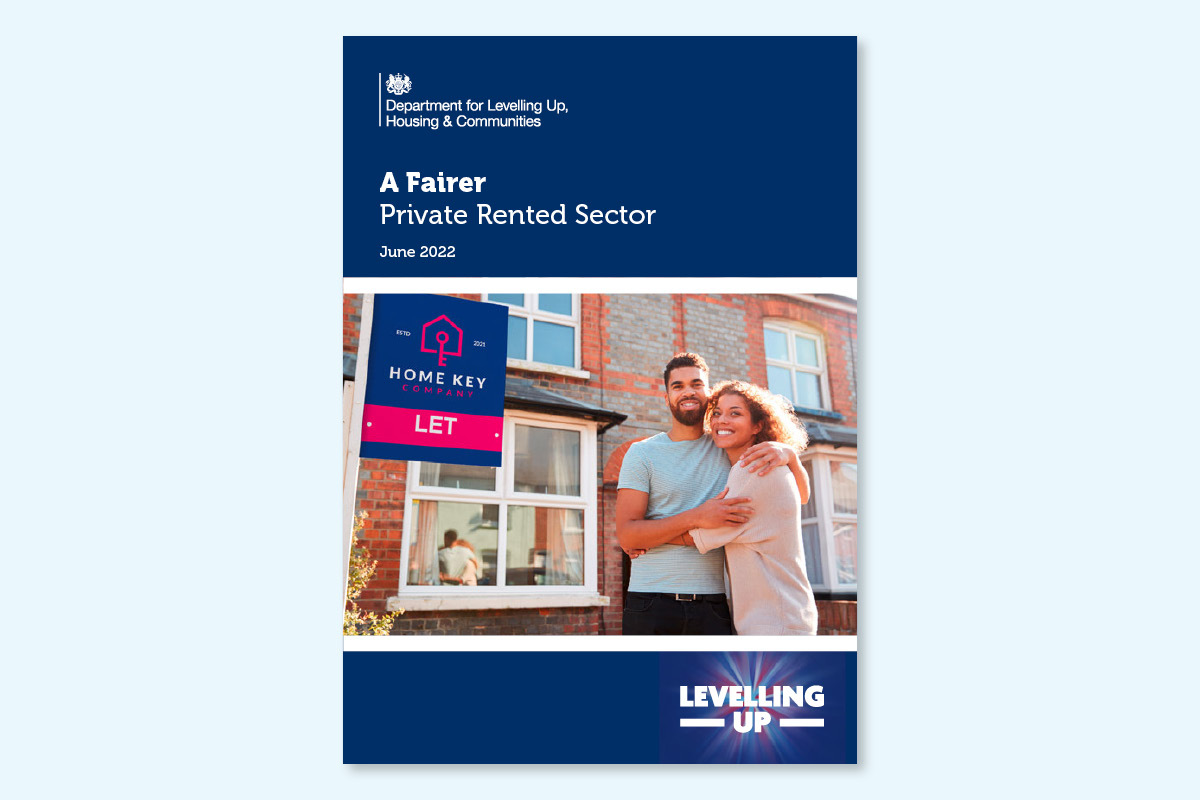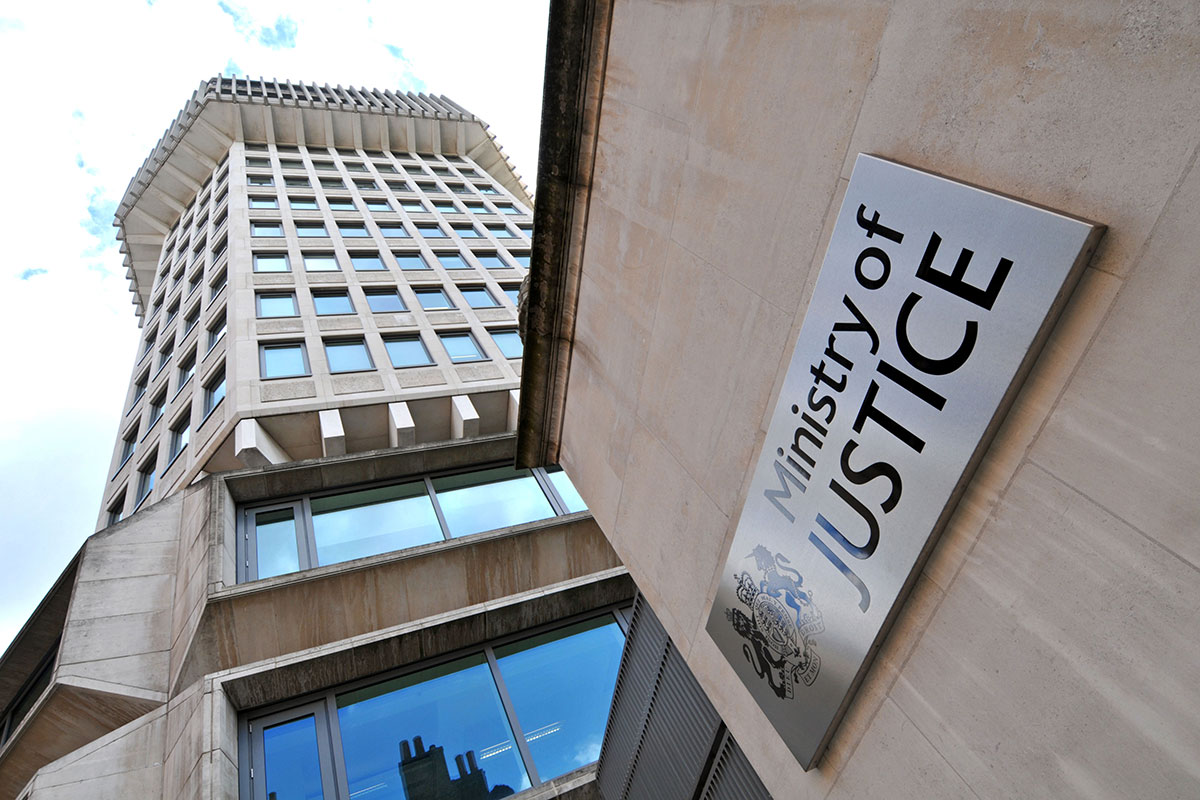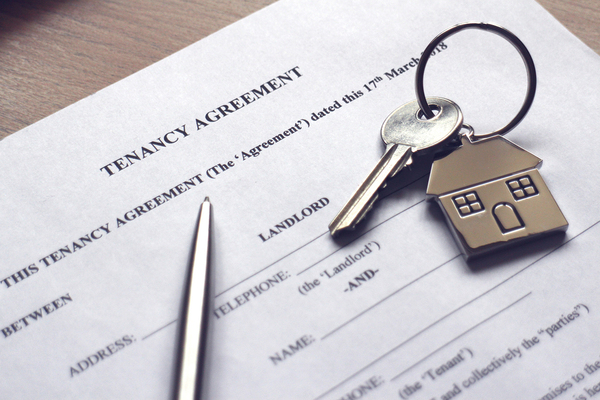You are viewing 1 of your 1 free articles
Renters’ Reform White Paper: the key takeaways
Today saw the publication of a white paper that sets out proposals to completely overhaul the private rented sector and redress the balance between landlords and tenants. Inside Housing’s news team pores over the detail and picks out the key changes
After more than three years the government has finally published its blueprint for reforming the country’s private rental market.
It was back in April 2019 that then-prime minister Theresa May announced plans to end Section 21 ‘no-fault’ evictions and ban landlords from rejecting renters who were receiving benefits.
After delays, caused in part by the coronavirus pandemic, the full white paper has finally been published.
The proposals in the paper outline what will form a new private renters’ bill, which is set to go before this current parliament, as promised by housing secretary Michael Gove.
With the white paper being published just a matter of hours ago, Inside Housing has pored through the 80-page document to pick out the key changes for the sector and analysed how significant they will be for landlords and tenants.
Safe and decent homes
Chapter two of the white paper outlines how and why standards in the private rented sector (PRS) should go beyond safety in a way that matches the expectations that already exist in the social rented sector.
In the document, the government says it believes that all tenants should have access to a good-quality and safe home and that no one should pay rent to live in a sub-standard, or even dangerous, property.
Landlords should also have a clear benchmark for standards in the homes they let.
To achieve this benchmark, the government plans to legislate to introduce a legally binding Decent Homes Standard (DHS) in the PRS for the first time, following a consultation.
For properties to be considered ‘decent’, private landlords will be required to ensure that homes are free from the most serious health and safety hazards, such as fall risks, fire risks or carbon monoxide poisoning.
Landlords must make sure that their properties do not fall into disrepair and that facilities, particularly kitchens and bathrooms, should be updated before the end of their lives.
To prevent tenants living in unacceptably damp and mouldy conditions, landlords will also have to ensure their homes are warm and dry.
To help make sure landlords meet these new legislative duties, the white paper proposes giving local councils the tools to enforce the DHS in the PRS so that they can crack down on non-compliant landlords while protecting the reputation of responsible ones.
Under this plan, the government will run several pilot schemes with local councils to trial improvements to the enforcement of existing standards and explore different ways of working with landlords to speed up the adoption of the DHS.
As part of the journey to introducing the DHS into the PRS, the government will review the housing health and safety rating system (HHSRS). This system is used to assess the seriousness of hazardous conditions including excess cold and heat and is expected to conclude later in the autumn.
The government hopes the proposals will help it deliver its aim to halve the number of non-decent rented homes by 2030.
Increased security and stability
A lack of security and stability is one of the biggest problems private renters face. As the government lays out in its white paper, almost a quarter of private renters whose tenancy ended in 2019-20 did not leave their tenancy by choice.
At the heart of the government’s plan to bring increased stability to the sector is the promise to abolish Section 21 ‘no-fault’ evictions.
Ministers plan to do this by moving tenants with an assured tenancy or assured shorthold tenancy to a “single system of periodic tenancies”, which it said will “provide greater security for tenants while retaining the important flexibility that privately rented accommodation offers”.
Under this system, tenants will be required to give two months’ notice before leaving a tenancy and landlords will only be able to evict a tenant in “reasonable circumstances”, which will be defined in law.
It is hoped that these more secure tenancies will support tenants to save with fewer unwanted moves.
The government said it will “allow time for a smooth transition to the new system”, which will be implemented in two stages, with timing depending on when Royal Assent is secured.
Six months’ notice will be provided before the first implementation date, after which all new tenancies will be periodic and governed by the new rules.
The government said it will provide at least six months’ notice of the first implementation date, after which all new tenancies will be periodic and governed by the new rules.
All existing tenancies will transition to the new system on a second implementation date, which will be at least 12 months after the first date. After this point all tenancies will be protected from Section 21 eviction.
In order to strike “a balance between protecting tenants’ security and landlords’ right to manage their property”, the government is also reforming the grounds of possession, which can be used by landlords in court to evict a tenant.
A new ground will be introduced for landlords who wish to sell their property or have them or close family members move into the property, however this cannot be used in the first six months of a tenancy.
A new mandatory ground for repeated serious arrears will also be introduced to prevent tenants paying off a small amount of arrears to stay below the eviction threshold.
The notice period will be increased to four weeks for the existing arrears eviction ground and tenants will not be evicted if the reason for their arrears is that they are waiting for welfare payments.
However, notice periods will be lowered for cases of criminal behaviour or serious anti-social behaviour.
Generally, the government has said it will introduce two-month notice periods for situations outside tenants’ control, such as the landlord selling the property, with less notice required for issues such as arrears and anti-social behaviour.
New specialist grounds for possession will be introduced “to make sure that those providing supported and temporary accommodation can continue to deliver vital services”, and the government has said that private registered providers will continue to have access to the same grounds of possession as private landlords.
Grounds of possession will be made “mandatory where it is reasonable”, meaning a judge will be forced to grant possession as long as the requirements are met.
Better resolution and robust enforcement
Private landlords look to be placed firmly within a regulatory framework in the white paper – from limiting rent rises to once per year, to mandating in law that landlords join a new property portal that will make it easier for councils to trace and impose penalties on landlords who break the rules.
The new ombudsman plans aim to replicate the impact of the ombudsman system currently in place in the social housing sector by naming and shaming those who fall short of the expected standards. The ombudsman can order landlords to pay up to £25,000 in compensation to their tenants and allow tenants to claim back rent from their properties over the period they deem that the home was not liveable.
The aim of the ombudsman is to make complaints and remediation both quicker and cheaper for all tenants.
Another big new change is enhancing the ability of renters to challenge their landlords more effectively. The new property portal aims to ensure landlords are registered and give tenants a better view of their rights when it comes to the standard of their homes.
Extending the Decent Homes Standard will ensure that private landlords cannot bypass measures that ensure their properties are safe, secure and liveable. It will also provide a clearer watermark as to when tenants can make claims to any ombudsman. The ombudsman itself will be backed by government powers to ensure decisions are enforced through the courts.
Local councils will have a much tougher range of enforcement powers available to them and DLUHC plans to bolster the existing database of rogue landlords and property agents by mandating entry of all eligible offences on the database. Offence data will be made publicly available, thus allowing tenants much greater transparency over landlords who have historic performance issues, prior to moving into a property.
Civil penalty thresholds will also be lowered, which will allow councils to share more data with other local authorities.
The court process has also been given a thorough overhaul, with the aim of the ombudsman to free up court time to deal with serious housing cases.
DLUHC says that it will introduce a package of wide-ranging court reforms that will target the areas that particularly frustrate and hold up possession proceedings. The government will also work to build on the mediation process for landlords, stating that it will use the forthcoming findings from the rental mediation pilot to decide how to improve mediation in the future.
Working with the Ministry of Justice, the aim of the changes is to provide a holistic overhaul of the mediation process.
Improved dispute resolution
This chapter addresses how the government hopes to empower tenants to challenge poor practice by their landlord, including unjustified rent increases.
This will be done in three key ways: rent increases will only be allowed once per year, rent review clauses will be brought to an end, and the legislation will aim to improve tenants’ ability to challenge excessive rent increases through the first-tier tribunal.
It will also look to strengthen tenants’ ability to hold landlords to account and introduce a new single ombudsman that all private landlords must join.
Third, the government will work with the Ministry of Justice (MoJ) and Her Majesty’s Courts and Tribunal Service (HMCTS) to target the areas where there are unacceptable delays in court proceedings.
Now, just 80 to 90 of around 2.3 million private landlords are signed up to an agent redress scheme with the Housing Ombudsman.
The government acknowledges that the PRS is falling behind other sectors, so it aims to make access to redress fairer and more efficient, particularly on issues that are the responsibility of the landlord – such as conduct, repairs and conditions.
The ending of rent review clauses will prevent tenants from being locked into automatic unjustifiable rent increases and any attempts to evict tenants through such increases will be unacceptable.
The introduction of periodic tenancies will also enable tenants to leave easily without remaining liable for the rent in unsuitable and unsafe accommodation.
Tenants who are struggling financially will be given access to a deft relief scheme that will give them a 60-day period in which most interest, fees and charges are frozen while they seek advice.
The new ombudsman will have powers to put things right for tenants, including compelling landlords to issue an apology, provide information, take remedial action, and/or pay compensation of up to £25,000.
In addition, the government has ruled out introducing a new Housing Court to improve the efficiency of any litigation as it believes the costs would outweigh the benefits.
But it says that by working in partnership with the MoJ and HMCTS, it aims to introduce a package of wide-ranging court reforms that will target the areas that particularly frustrate and hold up possession proceedings.
These are county court bailiff capacity, paper-based processes, a lack of adequate advice about court and tribunal processes, and a lack of prioritisation of cases.
The MoJ will also trial a new system in the first-tier tribunal (property chamber) to streamline how specialist property cases are dealt with where there is split jurisdiction between the civil courts and property tribunal.

A positive renting experience
There are three areas of the current private renting model that this chapter looks to deal with.
First, the changes aim to end discrimination from landlords over who they can let out their properties to.
The changes put forward in this chapter also aim to make rented properties feel more like homes, as well as creating an environment where tenants can more easily move between properties.
At the heart of tackling this first point will be bringing in new legislation that prohibits landlords from being able to ban people receiving housing benefit from renting their properties.
This practice, also known as ‘No DSS’, has become commonplace across the sector, with the English Private Landlord Survey finding that 44% of landlords were unwilling to let to tenants receiving housing benefit or Universal Credit.
This significantly reduces the number of properties those on benefits can access, particularly when you consider that 26% of private renters receive some form of benefit.
But it is not just those on welfare payments who are discriminated against. Families, those with young children or other vulnerable groups are also sometimes blacklisted by landlords.
As part of the changes, the government aims to make it illegal for any landlord or agent to put blanket bans on renting to families with children, or those in receipt of benefits.
To support this, he government will also work with the insurance market to help dispel myths that renting to these groups makes it harder to receive home insurance. There will also be a drive to increase the availability of information around welfare support for both tenants and landlords to ensure greater understanding of the benefits system and give tenants the opportunity to set up direct debit payments straight to landlords.
To make rented properties more homely, the proposals are making it easier for those with pets to rent from landlords.
Under this new system, landlords will have the powers to require renters to have pet insurance to cover any damage to their properties but will not be able to restrict renters otherwise.
Other changes will make it easier for tenants to make changes to their homes with decorations and wall hangings.
Finally, there are changes that aim to make it easier for renters to move from one property to the other, with changes to the deposit scheme. Currently, there are a number of problems that arise around the paying-back of a deposit when someone moves and this can often restrict people from moving to adequate alternative housing. In some cases, renters take on high interest credit just to cover the deposit for a new property while waiting to receive their previous deposit.
To help tackle this, the government is coming up with a three-pronged approach to create a better solution and stop the barriers to moving home.
One thing the government will look at is new market-led solutions that aim to reduce the overlap between tenancies, keep the impact and risks of these market-led solutions under review until the best solutions are found, and keep the current deposit protection scheme and broader deposit market under review and take further legislative action if needed.
Sign up for our tenancy management newsletter
Already have an account? Click here to manage your newsletters















